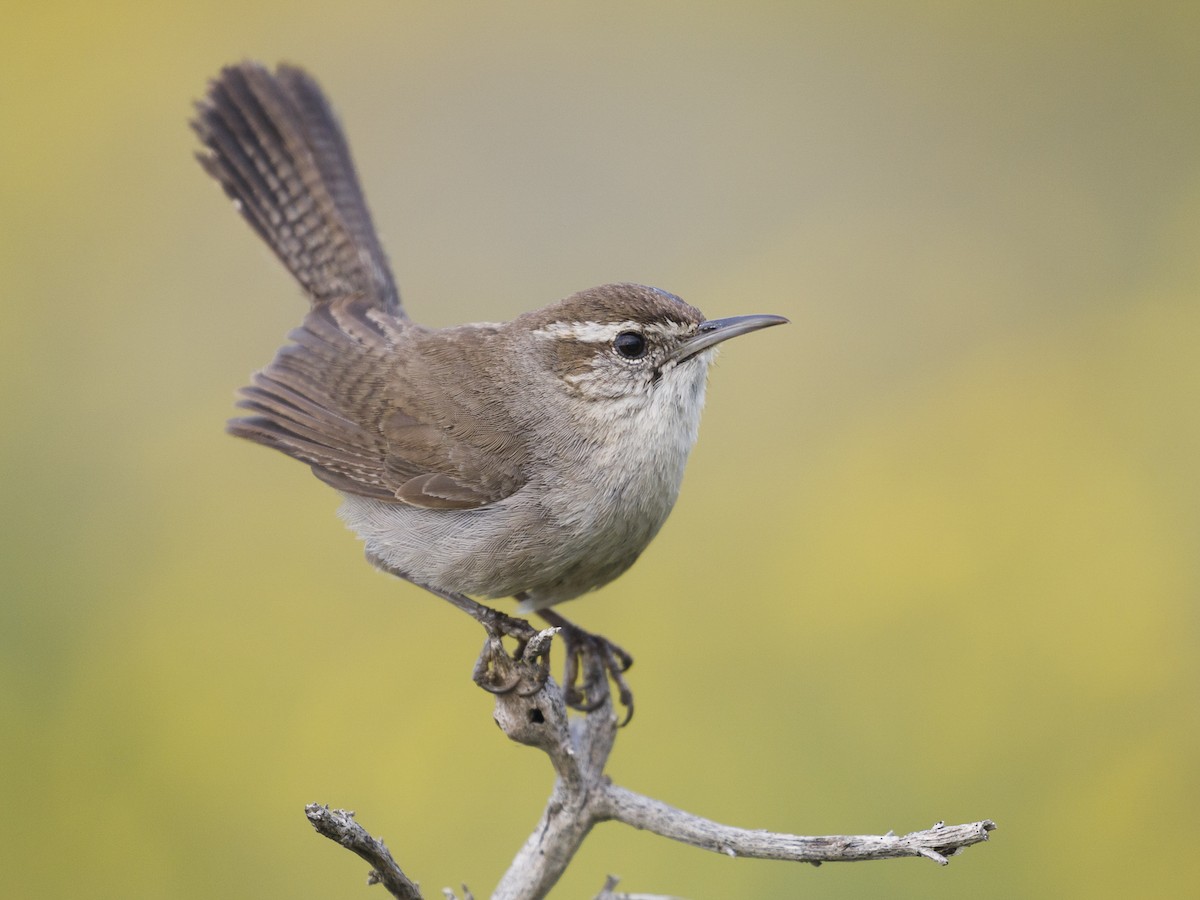North America is home to a total of 11 wren species, and within Indiana, 7 of these species have been observed. Out of the Indiana wrens, 5 are classified as regularly occurring, while 2 are considered accidental. This comprehensive guide aims to assist you in both visually and audibly identifying these wren species.
Throughout the year, Carolina Wrens can be found in Indiana, showcasing their presence during all seasons. In the summer, House Wrens, Marsh Wrens, and Sedge Wrens are common sights. On the other hand, Winter Wrens grace Indiana with their presence during the winter months.
Indiana also presents opportunities to spot other notable wrens, including Rock Wrens and Bewick’s Wrens. These unassuming songbirds possess distinctive features, such as their brown plumage, relatively small size, plump bodies, upright tails, and robust voices.
Wrens belong to the Troglodyidae family, primarily found in the New World, encompassing North and South America. However, the Eurasian Wren differs from its New World counterparts, inhabiting Europe and Africa as an Old World species.
Insects and spiders form the majority of the wrens’ diet, enabling their survival in diverse environments, including dry and rocky areas with limited vegetation.
Initially, it was believed that the Winter Wren was the same species as the Pacific Wren and Eurasian Wren. However, subsequent research has established them as distinct species, thus classifying them separately.
Throughout history, wrens have been entwined with folklore and symbolism. In Europe, it was once believed that harming wrens would invite misfortune.
This guide, based on avibase, aims to aid in the identification of wren species in Indiana. The wrens are listed in order of their frequency of sightings, as reported by birdwatchers’ checklists submitted to ebird.
For a valuable resource in identifying various bird species that visit your backyard, consider acquiring a free bird identification photo guide tailored specifically for Indiana.
7 Wren Species in Indiana:
1. Carolina Wren

Carolina Wrens are year-round residents in Indiana. They are recorded in 23% of summer checklists and 21% of winter checklists submitted by birdwatchers in the state.
These shy birds sport dark brown plumage on their backs and lighter shades underneath. They feature a distinct white eyebrow stripe and an upright tail.
Scientific name: Thryothorus ludovicianus
Length: 4.7-5.5 inches (12-14 cm)
Weight: 0.6-0.8 ounces (18-22 g)
Wingspan: 11.4 inches (29 cm)
Carolina Wrens are present throughout the Eastern and Southeastern United States.
These wrens can be found in wooded areas or locations abundant in vegetation, including backyard feeders. Their diet primarily consists of insects and spiders, although they occasionally consume lizards, frogs, and snakes.
Carolina Wrens produce a short song composed of quick whistles.
2. House Wren
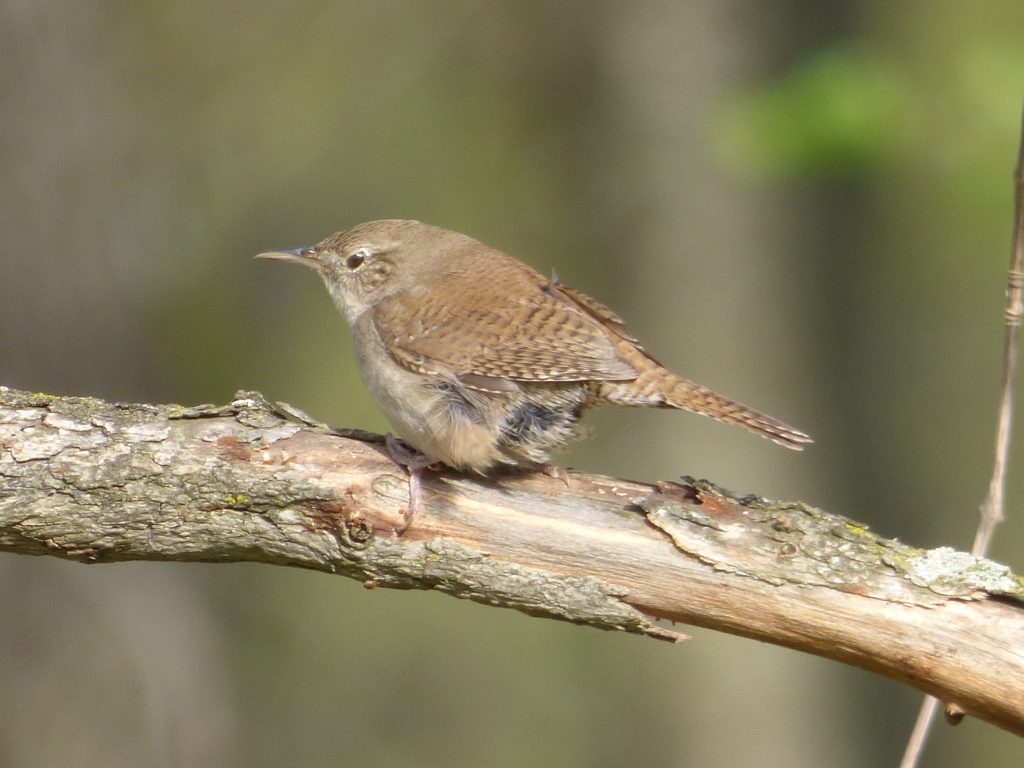
During the summer months, House Wrens are the most frequently spotted wrens in Indiana, recorded in 33% of checklists submitted by birdwatchers. Although some House Wrens can be observed year-round, April to October offers the best chances for sightings.
House Wrens are small round birds with nondescript brown plumage, marked by darker barred wings and tails, and a lighter throat. Both males and females share the same appearance.
Scientific name: Troglodytes aedon
Length: 4.3-5.1 inches (11-13 cm)
Weight: 0.3-0.4 ounces (10-12 g)
Wingspan: 5.9 inches (15 cm)
House Wrens breed in the United States and southern Canada during summer before migrating to southern regions, including Mexico, for the winter.
These energetic birds can be found in backyards, parks, and open woods, actively foraging for insects and spiders. Their distinctive behavior involves hopping through low branches with their tails raised, pausing occasionally to sing their cheerful song.
In addition to insects and spiders, House Wrens consume snail shells to supplement their calcium intake.
House Wrens emit a series of jumbled, frequently changing notes in their song.
3. Winter Wren
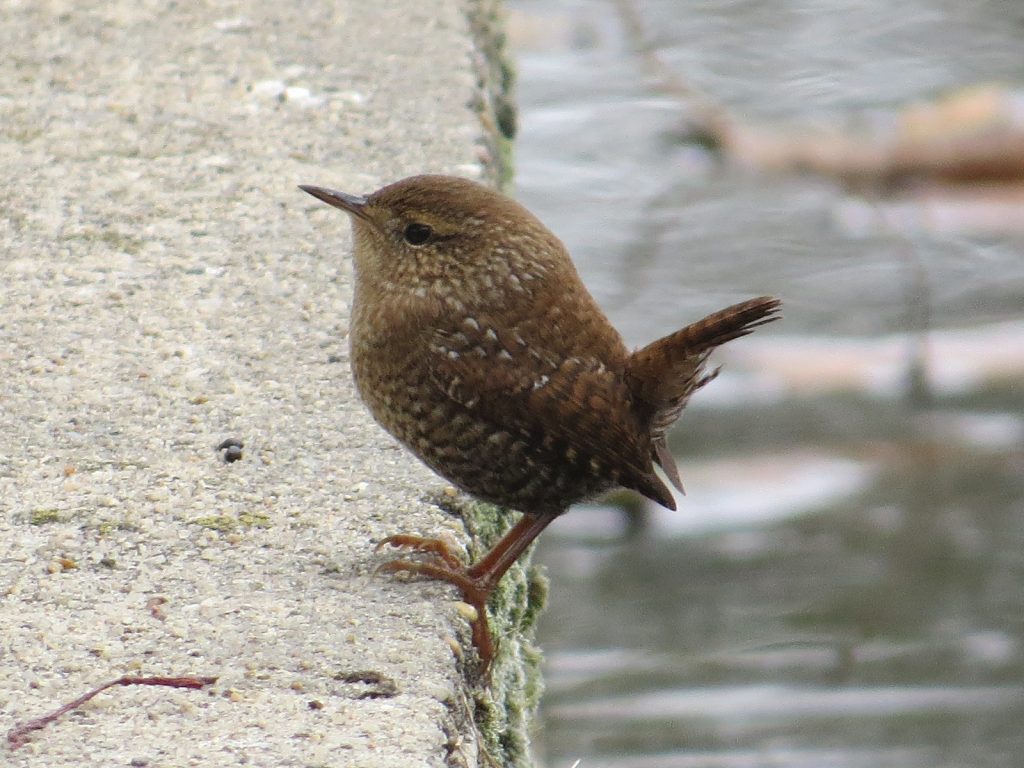
Winter Wrens are more commonly observed in Indiana during the winter months, accounting for 1% of checklists. They begin arriving as early as August and may remain until July, with October to January being the optimal period for spotting them.
These small, plump wrens exhibit brown plumage adorned with darker barring on the wings, tail, and belly. They possess a lighter eyebrow stripe and keep their short tails upright. Male and female Winter Wrens share similar appearances.
Winter Wrens bear a resemblance to Pacific Wrens, which led to their previous classification as the same species. However, they are now recognized as separate species with distinct songs.
Scientific name: Troglodytes hiemalis
Length: 3.1-4.7 inches (8-12 cm)
Weight: 0.3-0.4 ounces (8-12 g)
Wingspan: 4.7-6.3 inches (12-16 cm)
Winter Wrens are found in eastern United States during winter and in northeastern United States and Canada during summer.
Keep an eye out for Winter Wrens hidden among tangled undergrowth in forests and backyards. They feed on insects and spiders by rummaging through fallen leaves and decaying bark.
Winter Wrens produce a long, bubbly, and sweet song, which lasts up to 10 seconds.
4. Marsh Wren

During the breeding season, Marsh Wrens can be observed in Indiana, accounting for 2% of summer checklists. They are most prevalent from mid-April to October, although a few individuals remain year-round.
Marsh Wrens display brown plumage adorned with black and white streaks on their backs. Their undersides exhibit grayish-brown tones, and they possess the wren’s signature upright tail.
Marsh Wrens lack shoulder stripes and feature longer bills compared to Sedge Wrens. Both males and females exhibit similar appearances.
Scientific name: Cistothorus palustris
Length: 3.9-5.5 inches (10-14 cm)
Weight: 0.3-0.5 ounces (9-14 g)
Wingspan: 5.9 inches (15 cm)
Marsh Wrens breed in northern United States and central Canada, migrating to southern states and Mexico. During migration, they can be spotted in the eastern United States.
These wrens cling to reeds in wetland areas, with each foot gripping separate stalks. While they can be challenging to spot, their singing amidst the reeds, particularly during dawn and dusk, provides valuable auditory cues.
Marsh Wrens primarily feed on insects and spiders, foraging close to the water’s edge.
Marsh Wrens emit a distinctive buzzy song that can last for up to 20 minutes.
5. Sedge Wren
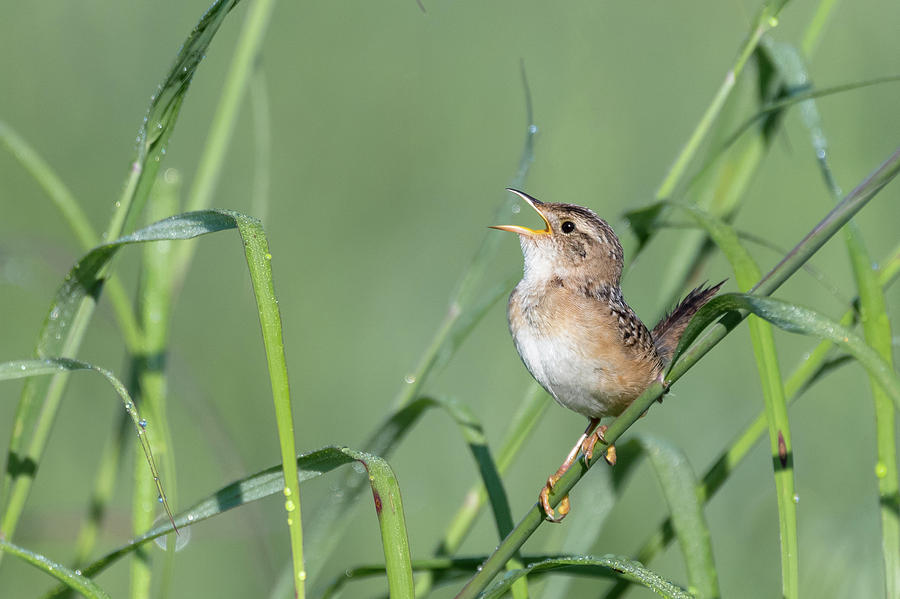
Sedge Wrens breed in Indiana during the summer season and appear in 1% of summer checklists. They commence their arrival as early as April and may stay until January, with the best months for sightings being May through October.
Sedge Wrens are small brown wrens with darker streaks and barring on their upper bodies and paler underparts. They possess a light eyebrow stripe. Both males and females share a similar appearance.
Sedge Wrens bear resemblance to Marsh Wrens and inhabit similar wet areas. However, Marsh Wrens lack striped shoulders and possess lighter bellies.
Scientific name: Cistothorus stellaris
Length: 3.9-4.7 inches (10-12 cm)
Weight: 0.3-0.3 ounces (7-10 g)
Wingspan: 4.7-5.5 inches (12-14 cm)
Sedge Wrens breed in southern Canada, the Midwest, and occasionally the eastern United States. They migrate to southeastern states and northern Mexico during winter, favoring areas near the Gulf and Atlantic coasts.
These elusive wrens can be found hidden within wet grasslands, marshy regions, and meadows abundant in vegetation. They tend to inhabit shallower areas compared to Marsh Wrens and actively hunt for insects and spiders.
Sedge Wrens produce a simple song consisting of a few short notes followed by a rapid succession of similar-pitched notes.
6. Rock Wren

Rock Wrens are classified as accidental species in Indiana. However, sightings were reported in the vicinity of Cane Ridge National Wildlife Refuge in 2021.
These wrens exhibit pale brown backs adorned with darker flecks. Their wings and tail feature barring, while their undersides possess a pale hue. The lower flanks and belly exhibit buff coloring.
Distinctive features of Rock Wrens include a pale eyebrow stripe, a long slightly curved bill, and dark legs. Both males and females share the same coloration. Rock Wrens often engage in bobbing motions, particularly when agitated, aiding in their identification.
Scientific name: Salpinctes obsoletus
Length: 4.9-5.9 inches (12.5-15 cm)
Weight: 0.5-0.6 ounces (15-18 g)
Wingspan: 8.7-9.4 inches (22-24 cm)
Rock Wrens inhabit dry and rocky areas within western United States and southwestern Canada. While some populations remain resident year-round in the south and west, individuals from central US states migrate south for the winter.
Keep a lookout for Rock Wrens in arid, rocky regions with limited vegetation. They feed on insects nestled within crevices of rocks.
Rock Wrens possess a repertoire of over 100 songs, characterized by repeated sounds that change in pitch with each iteration.
7. Bewick’s Wren:
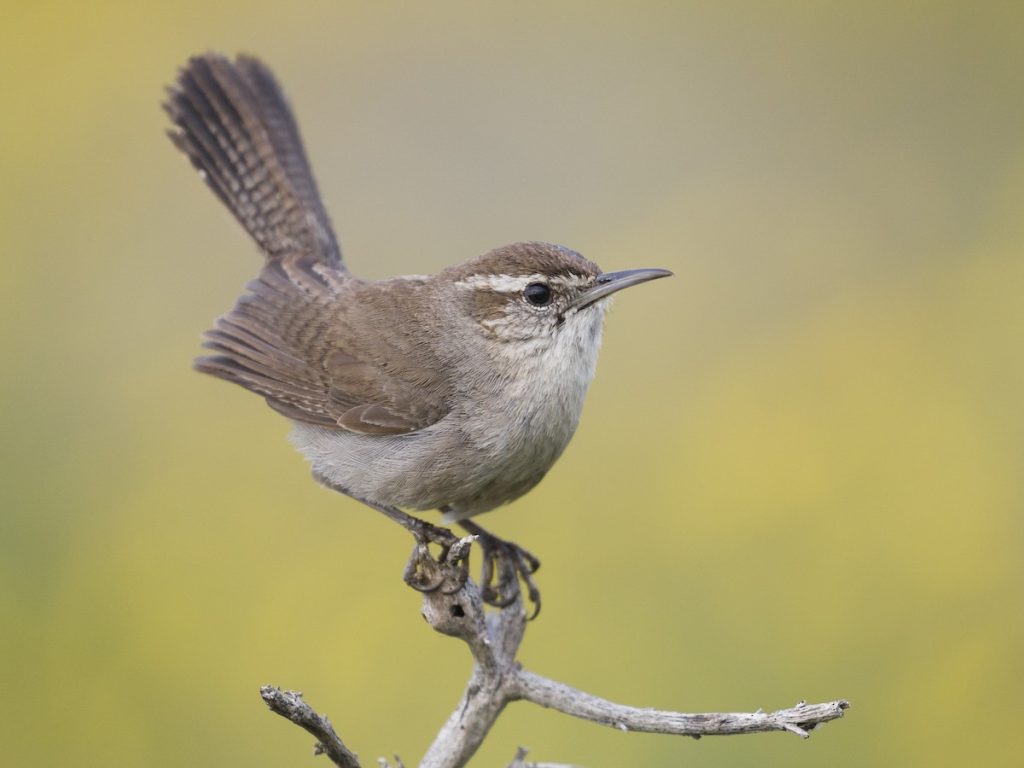
Bewick’s Wrens are considered extremely rare and accidental species in Indiana, with the last recorded sighting dating back to 2006.
These wrens boast brown backs and long, gray upright tails adorned with darker barring. Their bellies exhibit a gray tone, and they feature a distinct white stripe above the eye.
Scientific name: Thryomanes bewickii
Length: 5.1 inches (13 cm)
Weight: 0.3-0.4 ounces (8-12 g)
Bewick’s Wrens primarily inhabit southern and western United States throughout the year, with minor movements during winter.
Seek out Bewick’s Wrens in scrublands, thickets, and open woodlands, as they navigate from branch to branch, flicking their long tails.
Their diet comprises insects and larvae, including bees, bugs, caterpillars, and beetles.
Bewick’s Wrens produce a song consisting of short higher notes followed by lower-pitched, buzzy sequences.
Nests of these wrens are found on rock ledges, within old woodpecker nests, nest boxes, or crevices in buildings. They construct cup-shaped nests using sticks and grass, lined with softer materials. Bewick’s Wrens
lay 3-8 eggs, with an incubation period of approximately two weeks and fledging occurring within two additional weeks.
To attract Bewick’s Wrens to your backyard, offer suet, mealworms, and hulled sunflower seeds.
Fun fact: House Wrens have played a role in the decline of Bewick’s Wrens in the eastern United States, often destroying the eggs of their neighboring species.
Attracting Wrens to Your Backyard
Welcoming wrens to your backyard provides an opportunity to relish their melodious songs and observe their energetic behavior up close. While only a few wren species regularly visit backyards, such as House Wrens, Carolina Wrens, and Bewick’s Wrens, implementing the following ideas can enhance the chances of attracting them:
1. Embrace a natural environment: Avoid excessive tidiness and provide habitats for insects and spiders, which serve as wrens’ favored food. Leave fallen leaves, brush piles, and spider webs intact.
2. Water sources: Offer clean water, preferably in motion, at multiple locations within your backyard.
3. Nesting sites: Provide suitable nesting sites by installing nest boxes or leaving out old boots that may appeal to wrens.
4. Food offerings: Wrens enjoy mealworms and crickets. Additionally, provide peanut pieces and suet to cater to their dietary preferences.
Frequency of Wren Sightings in Indiana
Checklists compiled by birdwatchers provide valuable insights into the frequency of wren species sightings. The following lists showcase the wren species most commonly recorded in summer and winter checklists on ebird.
Wrens Spotted in Indiana during Summer:
– House Wren: 33.1%
– Carolina Wren: 23.6%
– Marsh Wren: 2.8%
– Sedge Wren: 1.3%
– Winter Wren: 0.1%
– Rock Wren: <0.1%
– Bewick’s Wren: <0.1%
Wrens Spotted in Indiana during Winter:
– Carolina Wren: 21.5%
– Winter Wren: 1.2%
– Rock Wren: <0.1%
– Marsh Wren: <0.1%
– House Wren: <0.1%
– Sedge Wren: <0.1%
